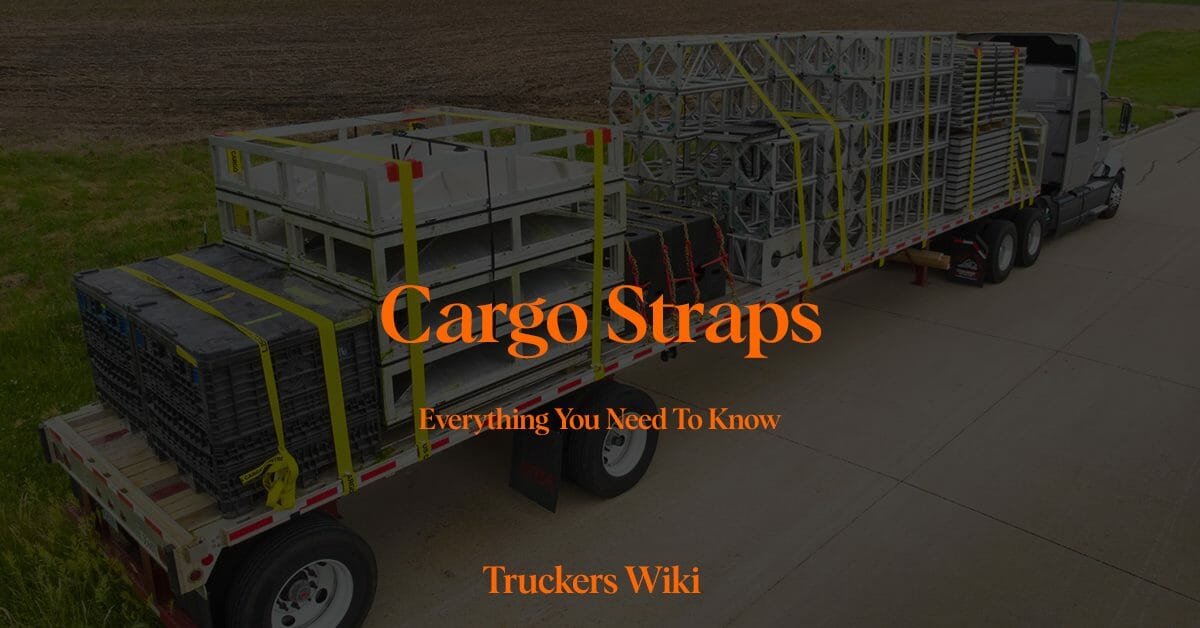
Table of Contents
What are Cargo Straps?
Cargo straps, also known as tie-down straps or lashing straps, are used to secure cargo during transportation. They are designed to withstand substantial tension and maintain the stability of the load during transit, thereby reducing the risk of cargo movement that could lead to accidents or damage.
These straps are generally made of high-strength materials like polyester webbing and feature various types of hardware such as ratchet buckles, cam buckles, or hooks, enabling the secure fastening of cargo.
Types of Cargo Straps
There are several types of cargo straps, each designed for specific applications:
Ratchet Straps: These are one of the most common types of cargo straps. They use a ratcheting mechanism to tighten and secure the strap, allowing for a high level of tension and securement. They are ideal for heavy loads.
Cam Buckle Straps: These straps use a cam buckle for tightening. The strap is pulled through the buckle to the desired tension, and the buckle’s cam is then locked down. These straps are typically used for lighter, less bulky cargo as they don’t cinch down as tightly as ratchet straps.
Winch Straps: These straps are specifically designed for use with a winch, providing a high level of tension. They are commonly used on flatbed trucks and trailers.
Proper Usage of Cargo Straps
Using cargo straps effectively involves several key steps:
Selection: Choose the right type and strength of strap for the load. The strap’s Working Load Limit (WLL) should be at least one-third of the total weight of the cargo.
Placement: Straps should be evenly distributed over the cargo and attached to the truck or trailer’s securement points. Sharp edges of the cargo that could damage the straps should be protected with edge protectors.
Tightening: Straps should be tightened securely using the appropriate mechanism (ratchet, cam buckle, or winch). The strap should be taut, with no slack.
Checking: Regularly check the straps during transit to ensure they are maintaining tension. Vibrations from the road can sometimes cause straps to loosen.
Safety Measures
The safety of cargo straps is critical to safe trucking operations. Here are a few safety measures:
Inspection: Before each use, inspect the straps for any signs of wear and tear, such as fraying, cuts, or damage to the hardware. Damaged straps should be replaced immediately.
Compliance: Ensure compliance with the Department of Transportation (DOT) regulations regarding cargo securement.
Proper Storage: When not in use, straps should be stored in a dry, clean place away from sunlight, chemicals, and sharp objects that could damage them.
How Many Straps Do You Need to Secure the Cargo?
The quantity of straps needed depends on the weight and length of your cargo.
As per the Federal Motor Carrier Safety Administration’s guidelines, one tie-down should be used if your cargo is shorter than 5 feet and weighs less than 1,000 pounds.
If your cargo is less than 5 feet but weighs more than 1,000 pounds, or if it’s between 5 to 10 feet long, you need two straps. Note that the first 10 feet of cargo must be secured by two tie-downs. For every additional 10 feet in length, one more tie-down should be added.
If you’re transporting cargo weighing 10,000 pounds or more, it’s advisable to use at least four tie-downs. To ensure your straps last longer and aren’t damaged by the edges of the cargo, make use of corner protectors.
Keep in mind that these guidelines should be viewed as the minimum requirements. Depending on the nature of the cargo and the conditions of your journey, you may want to consider using additional straps to ensure a safe transit. Always remember that safe and secure cargo transportation not only protects your goods but also contributes to road safety.
Learn about Tarp Straps here.
Learn about Swing Doors here.
Learn about Roll Up Doors here.
Learn about Lift Gate here.
Learn about Load Bars here.
Learn more about the types of trailers used in the trucking industry.

